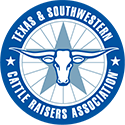Walking Stick Cholla (Opuntia imbricata)
The Cholla, Opuntia imbricata, is an upright cactus that can grow up to 10 feet high with a trunk diameter of 10 inches. It is a member of the cactus family, named after an ancient town in Greece called Opus. The species “imbricata” means overlapping, referencing the ridges of the joints.
Cholla is found from the Big Bend area of Texas throughout the Southwest into Kansas. It is usually found on clay to clay-loam soils.
- Has the appearance of a candelabra, with branches covered in 1-inch-long, green to white, barbed spines.
- Produces large pink to purple flowers on the terminal ends of branches.
- The flowers are usually up to 2 inches in length and 3 inches in width. On occasion, yellow flowers have been identified.
- Has cylindrical “joints” that can be more than an inch in diameter and of various lengths.
- The yellow fruit has been used in the past to make an art dye.
Cholla is known by numerous common and local names, but “walking stick” seems to be the most common. After the plant dies and the tissue is removed from its woody, hollow framework, a series of rhombic holes and meshes remains. These woody skeletons are made into a unique walking stick.
Cholla produces a yellow seed-bearing fruit that eventually falls off the plant. Various species of wildlife and birds consume the fruits and small seeds. The plant can become a problem on grazing lands by forming dense thickets and it has zero value for domestic livestock.
Cholla can be controlled using mechanical and chemical methods. Caution should be taken when controlling this plant mechanically because it can sprout anew from joints left in contact with soil.
Editor’s note: Kent Ferguson, retired rangeland management specialist from USDA Natural Resources Conservation Service (NRCS), is providing us with plant identification photo stories to help ranchers identify those forbs, forages and species growing in the pastures. Additional photos provided by USDA NRCS.
Walking Stick Cholla is excerpted from the June 2018 issue of The Cattleman magazine.



